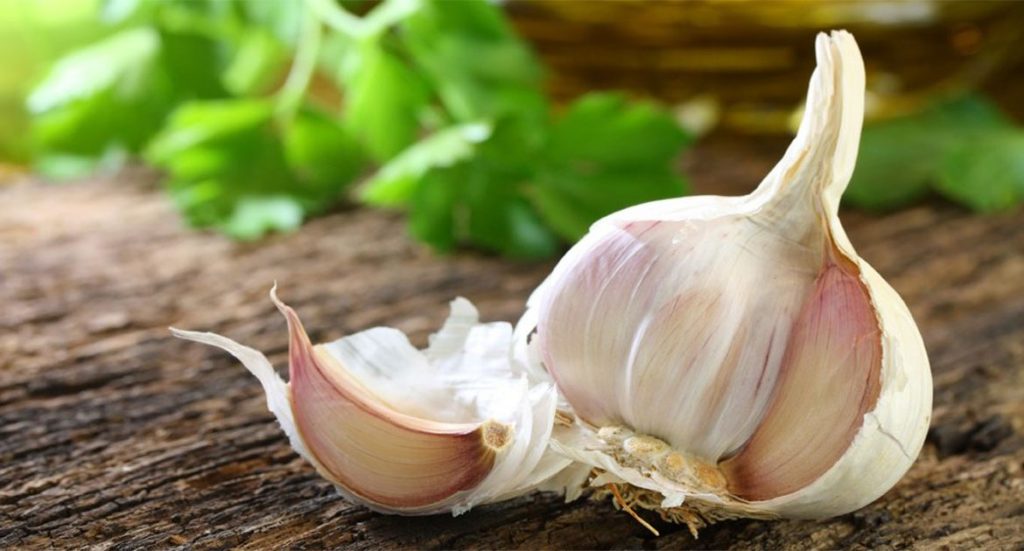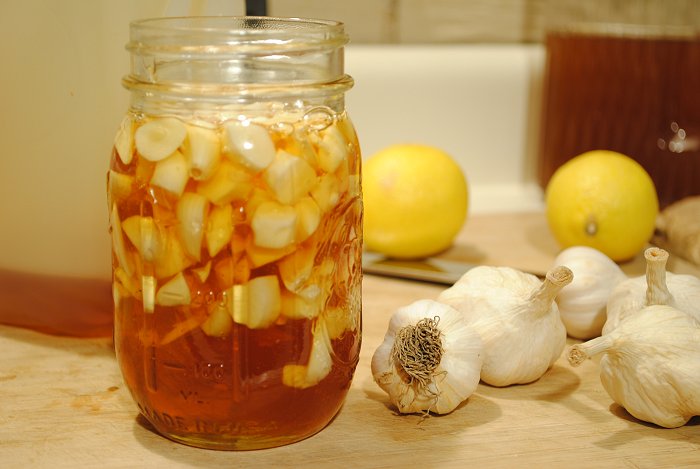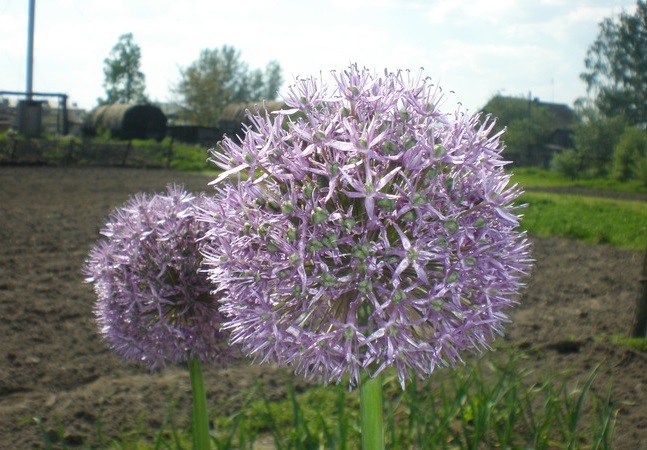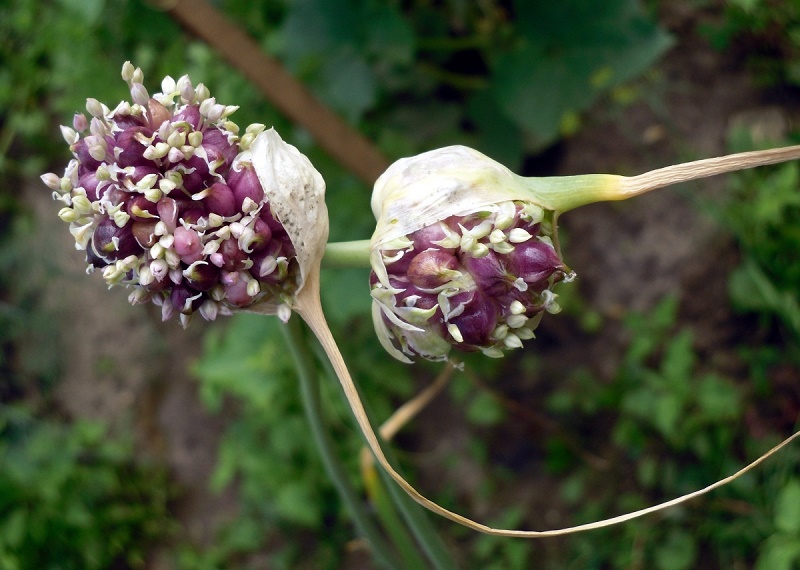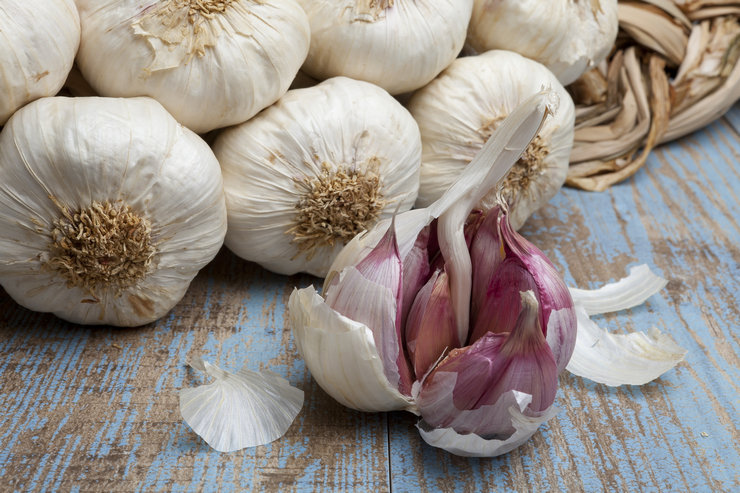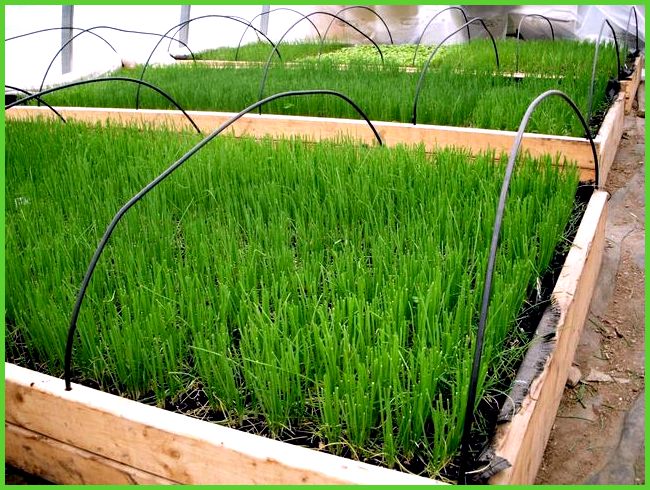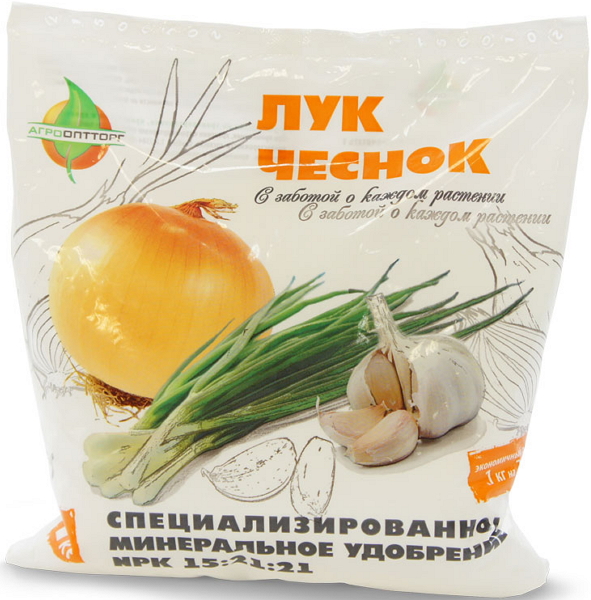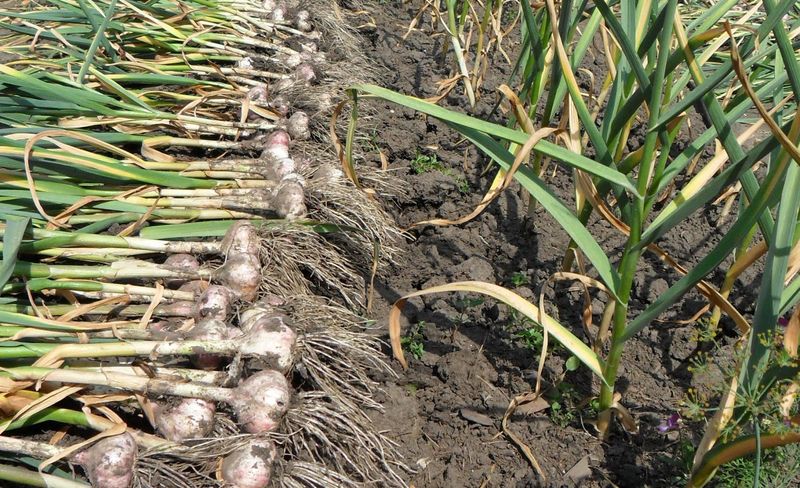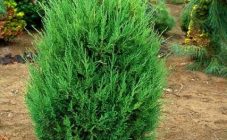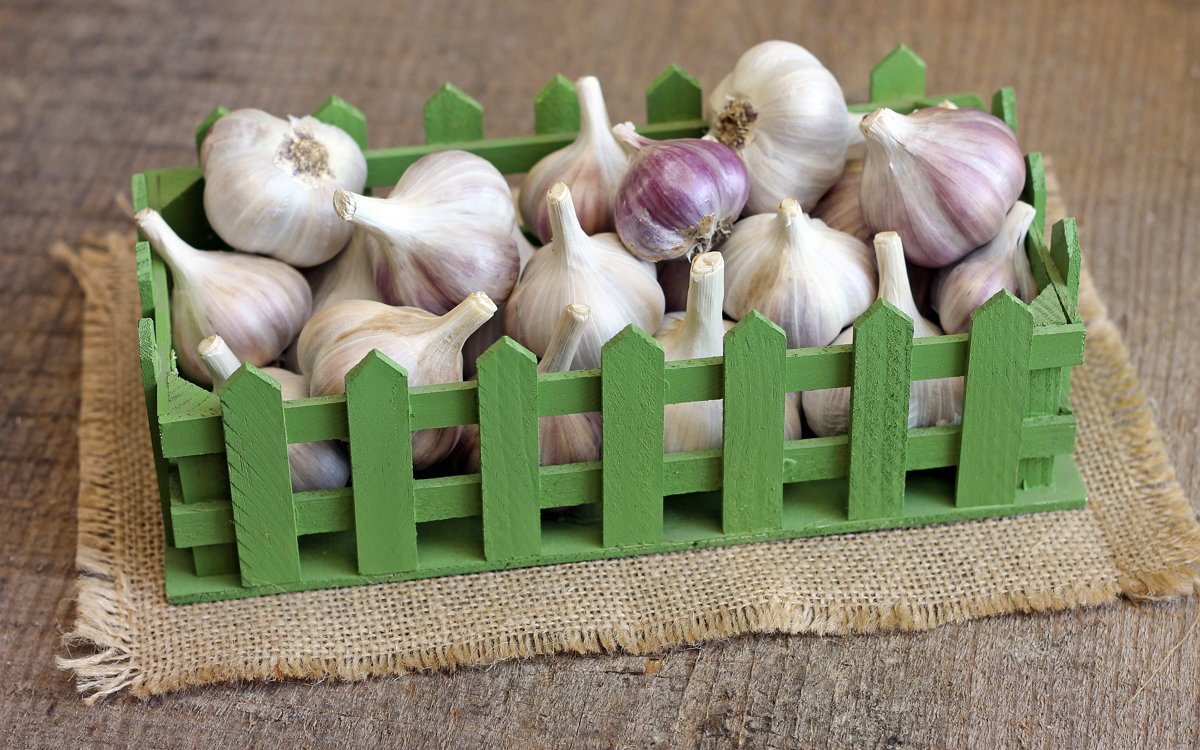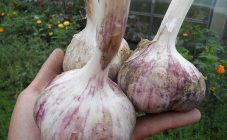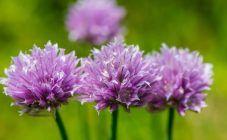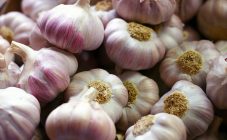Content:
Agrarians have long been involved in the cultivation of Chinese garlic. Most summer residents do not distinguish garlic from China, which stands out for its large dimensions. Sometimes it can be purchased in Russian stores.
China vegetable is different:
- external appearance;
- hardness;
- lightness;
- white colors.
Garlic does not change its color, does not rot, and is stored for a long time. By these signs, everyone can easily distinguish Chinese garlic. This result is achieved when the plant is treated with chlorine. Chinese manufacturers don't care about consumer safety. The garlic heads have the same color and tone. It is impossible to grow such a vegetable in natural conditions.
The domestic vegetable is distinguished from the imported product by the shelf life, which is much higher for imported garlic. The keeping quality of the goods is ensured by processing with chemicals - maleic hydrazite.
It is not for nothing that consumers are wondering whether garlic from China can be eaten. Eating chemically treated garlic will not add health, but will provide a harmful effect on the body.
Description
The appearance of the Chinese vegetable in Russia dates back to 2000. By this time, garlic was established on the market in many countries. In addition, its production was cheap and the harvesting season was long.
However, how good is Chinese garlic that is on sale in all supermarkets? Vegetable growers are able to grow a vegetable on a personal plot, the differences of which are environmental friendliness and quality.
Chinese garlic belongs to perennial crops that belong to the subfamily of onions and the liliaceae family. It is used as a vegetable plant and flowers as a spice. It is widely used in alternative medicine recipes for the preparation of infusions and decoctions.
Garlic is called fragrant because of its fragrant flowers.
In the natural environment grows on:
- meadows and rocky ground;
- dry river valleys and hills.
The cultivation of garlic goes back several thousand years. Habitat of ancient culture: Asia and the Philippines, Korea and Japan. It is also recognized in the Far East, India and Mongolia, Thailand.
Other names for garlic:
- jusai;
- sweet onion;
- field;
- odorous;
- spicy;
- branched.
Fragrant garlic belongs to the spring type - there is no hard core in the middle of the head, in comparison with the winter variety. It has an unformed false bulb with thin elongated leaves. Virtually all the qualities that are present in onions and garlic are available. A ripe Chinese vegetable has a green-yellow feather color and wider leaves compared to the narrow, rich green feathers of other garlic varieties.
In a favorable situation, the garlic reaches a height of up to half a meter, the leaf width is about one centimeter. The plant is frost-resistant, can withstand cold temperatures down to -40 ° C. The herbaceous culture is entirely edible.
The pen is used for:
- salads;
- second courses;
- pastry fillings.
Arrows of flowers, bulbs, leaves are eaten in pickled, pickled, salted, dried form.
Garlic is propagated by seeds and shoots.
Agricultural technology of cultivation
Site selection and preparation
Garlic is planted in early spring. It perfectly tolerates temperature changes. The landing site is raised. Remove a layer of soil throughout the bed to the depth of a shovel bayonet. The bottom is lined with foliage, weeds, straw. Buried with soil.
Top dressing is introduced.
Fertilize 1 m2 of soil:
- wood ash (1 glass);
- superphosphate (1.5 tbsp. l.);
- humus (up to 10 kg) or other organic matter.
At the beginning of the spring season, the soil is dug up, leveled with a rake and grooved. Fertilize with ammonium nitrate at the rate of 1 tsp. per 1 m2 of area.
The preparation of garlic cloves consists in separating the head and cleaning the planting material from the skin. The cloves are disinfected in copper sulfate by dissolving the substance (10 g) in water (10 l).
Seed preparation
Seed is harvested from 2 or 3-year-old crops. The foliage is not cut. Fertilize additionally with ammophos: add 60 g per m2. When ripening, the seed umbrellas of garlic are removed and dried at home. Preferably under a canopy and with ventilation.
The following operations:
- manual threshing;
- wrapping in the wind;
- rinsing in water;
- drying;
- storage in the usual way.
If you miss the time, planting is possible in April or May with germinated planting material, which is regularly irrigated.
Landing
When sowing seed garlic adhere to the rules:
- the distance between the rows is 30-35 cm;
- seeding depth - up to 2 cm;
- planting material consumption - up to 2 g per 1 m2.
When sprouts appear, thinning is carried out 2-3 times, leaving the crop in a row with an interval of 15 cm. When the garlic is planted with seeds, the harvest is expected next year.
Growing in protected ground
For the northern regions, cultivation in a greenhouse is optimal. Keeping warm throughout the summer season will allow the bulbs to ripen in August.
Technological methods of soil preparation and sowing of garlic are identical to open ground. However, you will have to water and feed more often.
Forcing garlic in winter
Vegetable crops are grown all year round in a greenhouse or at home using flower containers. For distillation, three-year-old plants are suitable, which are transplanted with an earthen clod. So they provide themselves with fresh vitamins for a whole year.
Care
Loosening
The bulbs are loosened periodically. The appearance of the first leaves is a signal for the procedure. The second time, loosening is carried out when a strong trunk is formed. If the garlic is loosened, the earth is poured from it, providing air access.
Watering
Water the vegetable systematically to:
- avoid roughness and dryness of feathers;
- the onion retained a spicy taste;
- avoid head cracking.
In the phase of intensive growth, watering is required up to 5 times daily. In the maturing stage - twice a day. Vegetables are not watered during the rainy season.
Fertilizer
It is easy to find food supplements for garlic in specialty stores. Urea is used as a universal drug when sprouts appear: per 1 m2 - 1 tsp. Epin Extra is used for spraying: 1 ampoule - for 5 liters of liquid.After 14 days, Ferovit is useful to improve the photosynthesis of allspice onions: 1 ampoule - for 1.5 liters of water.
Crop feeding is carried out after harvesting. Mineral fertilizers are appropriate. Efficiency is noted when using organic matter: liquid chicken manure (in a ratio of 1:15) or mullein (in a ratio of 1: 6).
Pest and phyto-disease control
The onion fly can harm the crop: the larvae destroy the garlic heads. To defeat the parasites, carefully scoop the soil from the roots of the garlic, exposing them a little. Dry and sunny weather protects against reproduction of larvae of harmful insects.
Harvest
Harvesting takes place at the end of August - early September. Ripe garlic is characterized by large heads and white or purple hulls.
Spring garlic is not very productive - usually there are up to 7-8 cloves per head.
They collect the fruits with a pitchfork: dig in and pull out. Then it is dried for 10 days.
Some of the products are allowed for processing. Small heads are left for the next seeding.
In the second year of growth, a djusai feather is used for culinary purposes, 3 or 4 cuts are made per season when the leaves reach 25 cm. After pruning, they are fed with a nitrophoska solution: for a 10-liter bucket of water - 2 tbsp. l. drug. The last time the greens are cut is in the middle of August - the garlic needs strength to winter. In late autumn, the green feathers are cut off entirely.
The shelf life of bulbs in the refrigerator is one year. They do not lose their taste and do not differ from store products.
Advantages and disadvantages of the variety
Chinese garlic, which remained in the soil, sprouts well in the spring. The trunks get fat quickly and the leaves grow wider and larger than a regular winter vegetable. The culture emerges earlier than spring garlic. The formation of large heads and yellowing of the stem fall out at the end of July.
Among the advantages they emphasize:
- stress resistance;
- cold resistance;
- odor persistence during flowering;
- versatility of the variety: the ability to obtain a good harvest of both winter and spring.
Minuses:
- short shelf life of feathers: it is less than that of other spring species;
- small head, 1.5 cm in diameter;
- lack of a solid stem;
- small fruits are typical for the last season.
The differences between the Chinese vegetable include ease of cultivation and maintenance. Easily gets used to changing weather conditions. Garlic is zoned in various regions of the country.
